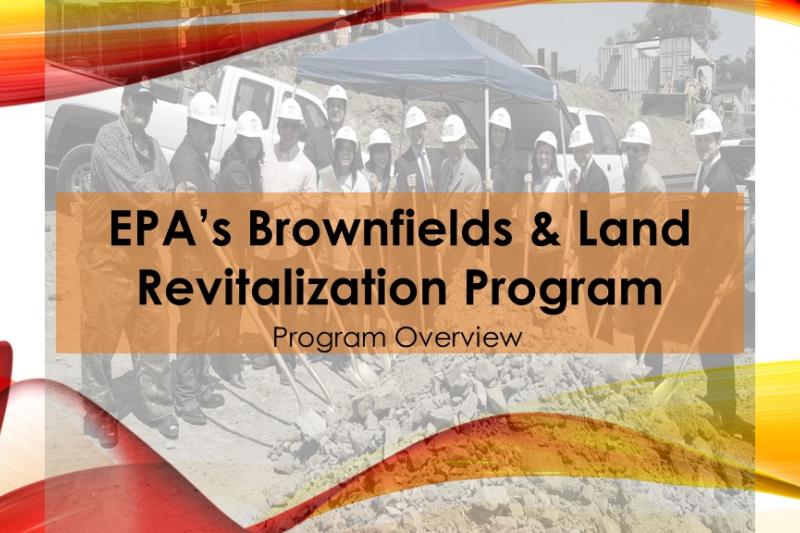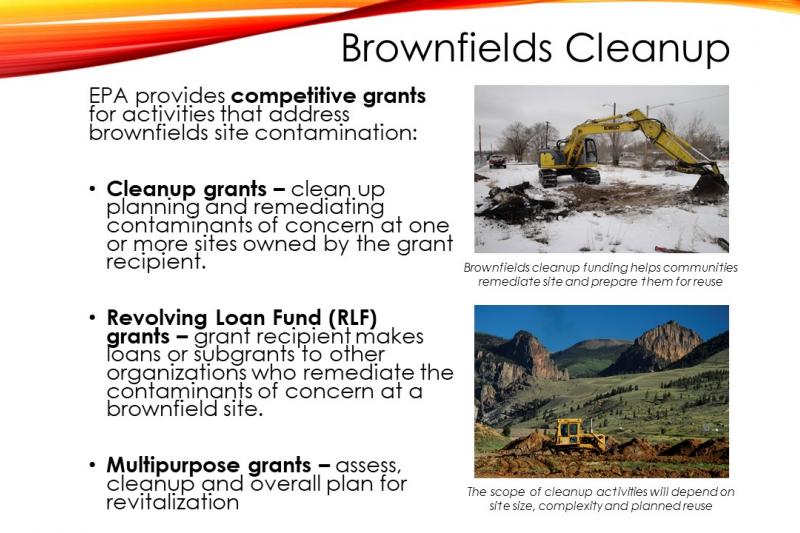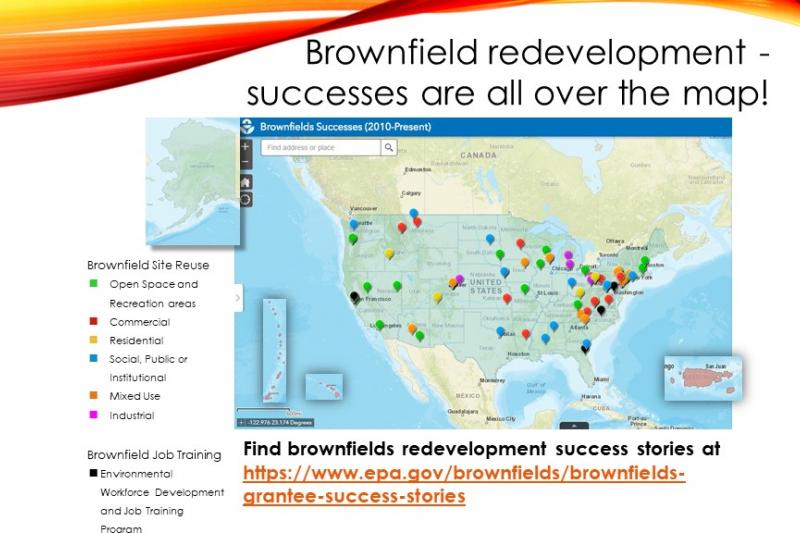Overview of EPA's Brownfields Program
Definition of a Brownfield Site
With certain legal exclusions and additions, the term "brownfield site" means real property, the expansion, redevelopment, or reuse of which may be complicated by the presence or potential presence of a hazardous substance, pollutant, or contaminant. Cleaning up and reinvesting in these properties protects the environment, reduces blight, and takes development pressures off greenspaces and working lands.
The definition is found in Public Law 107-118 (H.R. 2869), the "Small Business Liability Relief and Brownfields Revitalization Act", signed into law January 11, 2002. View the text of the law (PDF) (27 pp, 187 K, About PDF)
What is a Brownfield?
A brownfield is a property, the expansion, redevelopment, or reuse of which may be complicated by the presence or potential presence of a hazardous substance, pollutant, or contaminant. It is estimated that there are more than 450,000 brownfields in the U.S. Cleaning up and reinvesting in these properties increases local tax bases, facilitates job growth, utilizes existing infrastructure, takes development pressures off of undeveloped, open land, and both improves and protects the environment. Learn more about the process of assessing brownfield sites, types of sites and contaminants reported at brownfields and community actions for their cleanup and reuse.
How does EPA's Brownfields and Land Revitalization Program Stimulate Cleanup and Redevelopment?
Since its inception in 1995, EPA's Brownfields Program has grown into a proven, results-oriented program that has changed the way communities address and manage contaminated property. Communities can learn more about the cleanup and redevelopment process in the Anatomy of Brownfields Redevelopment guide.
EPA's Brownfields Program is designed to empower states, communities, and other stakeholders in economic redevelopment to work together in a timely manner to prevent, assess, safely clean up, and sustainably reuse brownfields. Beginning in the mid-1990s, EPA provided small amounts of seed money to local governments that launched hundreds of two-year Brownfields pilot projects and developed guidance and tools to help states, communities and other stakeholders in the cleanup and redevelopment of brownfields sites. The 2002 Small Business Liability Relief and Brownfields Revitalization Act codified many of EPA's practices, policies and guidance. This expanded EPA's assistance by providing new tools for the public and private sectors to promote sustainable brownfields cleanup and reuse. The 2018 Brownfields Utilization, Investment and Local Development (BUILD) Act reauthorized EPA’s Brownfields Program, and authorized changes that affect brownfield grants, ownership and liability provisions, and State & Tribal Response Programs.
Brownfield grants continue to serve as the foundation of EPA's Brownfields Program. These grants support revitalization efforts by funding environmental assessment, cleanup, and job training activities.
- Brownfields Assessment Grants provide funding for brownfield inventories, planning, environmental assessments, and community outreach.
- Brownfields Revolving Loan Fund Grants provide funding to capitalize loans that are used to clean up brownfield sites.
- Brownfields Cleanup Grants provide funding to carry out cleanup activities at brownfield sites owned by the applicant.
- Multipurpose (MP) Grants provide funding to conduct a range of eligible assessment and cleanup activities at one or more brownfield sites in a target area.
- Environmental Workforce Development and Job Training Grants provide environmental training for residents impacted by brownfield sites in their communities.
- Technical Assistance, Training, and Research Grants provide funding to organizations to conduct research and to provide training and technical assistance to communities to help address their brownfields challenges.
- State and Tribal Response Program Grants provide non-competitive funding to establish or enhance State and Tribal Brownfields response programs.










